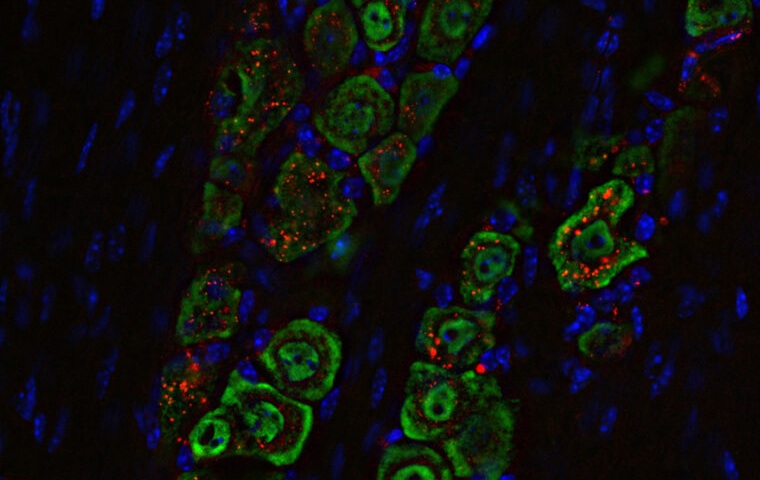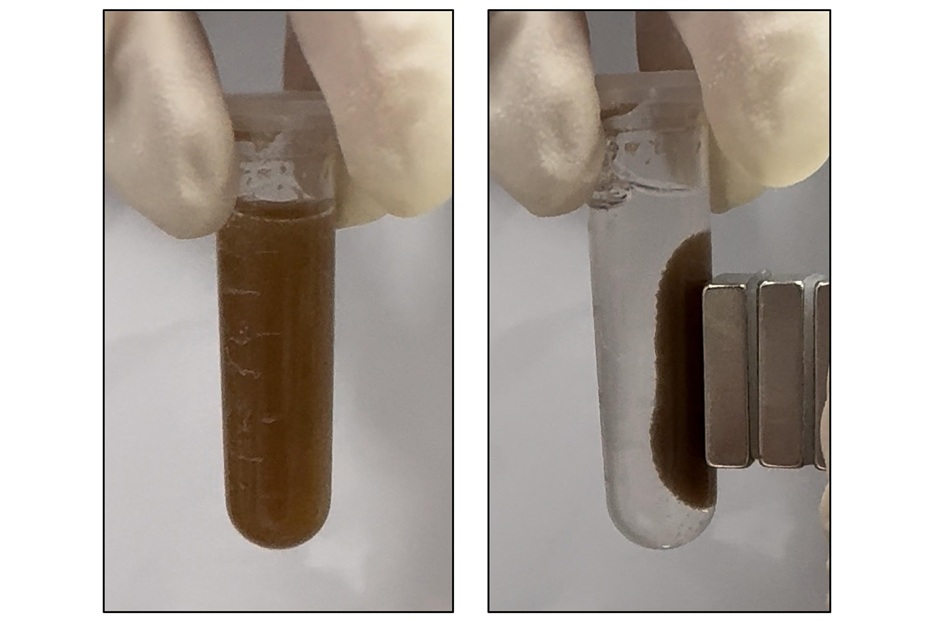Endovascular Treatment Effective with Carotid Disease
|
By HospiMedica International staff writers Posted on 12 Jun 2017 |

Image: Research shows clearing blood clots in stroke patients is effective even those with blocked carotid arteries (Photo courtesy of FotoSearch).
Intra-arterial treatment (IAT) for acute ischemic stroke caused by intracranial proximal occlusion is effective even in patients with extracranial carotid disease (ECD), according to a new study.
Researchers at Academic Medical Center (AMC; Amsterdam, The Netherlands), Leiden University Medical Center (LUMC, The Netherlands), and other institutions conducted a subgroup analysis of the Multicenter Randomized Clinical Trial of Endovascular Treatment (MR CLEAN) study to examine if the presence of ECD--defined as cervical internal carotid artery stenosis higher than 50%, or occlusion--modified the effect of IAT for intracranial proximal anterior circulation occlusion. The MR CLEAN IAT protocol included intra-arterial thrombolysis, mechanical treatment, or both as treatment for acute ischemic stroke.
The primary measure was functional outcome, as measured by modified Rankin Scale at 90 days and reported as adjusted common odds ratio (acOR) for a shift in direction of a better outcome. The results showed that functional outcome was associated with an acOR of 1.67 in favor of the IAT intervention. In the analysis of the pre-specified subgroup of patients with ECD, acOR was 3.1, compared to an acOR of 1.3 in patients presenting without ECD. The study was published on May 23, 2017, in Annals of Internal Medicine.
“The presence of ECD is associated with less favorable clinical outcomes in patients with acute ischemic stroke caused by intracranial proximal occlusion, and acute IAT in the setting of extracranial and intracranial lesions is considered challenging,” concluded lead author Olvert Berkhemer, MD, PhD, of AMC, and colleagues. “IAT may be at least as effective in patients with ECD as in those without ECD, and it should not be withheld in these complex patients with acute ischemic stroke.”
Based on the Framingham Heart Study and Cardiovascular Health Study populations, the prevalence of ECD is approximately 9% in men and 6–7% in women, and it accounts for up to 15–20% of all ischemic strokes. Several possible mechanisms are involved, including atheroembolism of cholesterol crystals or other debris, artery-to-artery embolism of thrombus, dissection, acute thrombotic occlusion, and reduced cerebral perfusion with plaque growth.
Related Links:
Academic Medical Center
Leiden University Medical Center
Researchers at Academic Medical Center (AMC; Amsterdam, The Netherlands), Leiden University Medical Center (LUMC, The Netherlands), and other institutions conducted a subgroup analysis of the Multicenter Randomized Clinical Trial of Endovascular Treatment (MR CLEAN) study to examine if the presence of ECD--defined as cervical internal carotid artery stenosis higher than 50%, or occlusion--modified the effect of IAT for intracranial proximal anterior circulation occlusion. The MR CLEAN IAT protocol included intra-arterial thrombolysis, mechanical treatment, or both as treatment for acute ischemic stroke.
The primary measure was functional outcome, as measured by modified Rankin Scale at 90 days and reported as adjusted common odds ratio (acOR) for a shift in direction of a better outcome. The results showed that functional outcome was associated with an acOR of 1.67 in favor of the IAT intervention. In the analysis of the pre-specified subgroup of patients with ECD, acOR was 3.1, compared to an acOR of 1.3 in patients presenting without ECD. The study was published on May 23, 2017, in Annals of Internal Medicine.
“The presence of ECD is associated with less favorable clinical outcomes in patients with acute ischemic stroke caused by intracranial proximal occlusion, and acute IAT in the setting of extracranial and intracranial lesions is considered challenging,” concluded lead author Olvert Berkhemer, MD, PhD, of AMC, and colleagues. “IAT may be at least as effective in patients with ECD as in those without ECD, and it should not be withheld in these complex patients with acute ischemic stroke.”
Based on the Framingham Heart Study and Cardiovascular Health Study populations, the prevalence of ECD is approximately 9% in men and 6–7% in women, and it accounts for up to 15–20% of all ischemic strokes. Several possible mechanisms are involved, including atheroembolism of cholesterol crystals or other debris, artery-to-artery embolism of thrombus, dissection, acute thrombotic occlusion, and reduced cerebral perfusion with plaque growth.
Related Links:
Academic Medical Center
Leiden University Medical Center
Latest Surgical Techniques News
- Novel Endoscopy Technique Provides Access to Deep Lung Tumors
- New Study Findings Could Halve Number of Stent Procedures
- Breakthrough Surgical Device Redefines Hip Arthroscopy
- Automated System Enables Real-Time "Molecular Pathology" During Cancer Surgery
- Groundbreaking Procedure Combines New Treatments for Liver Tumors
- Ablation Reduces Stroke Risk Associated with Atrial Fibrillation
- Optical Tracking Method Identifies Target Areas in Robot-Assisted Neurosurgery
- General Anesthesia Improves Post-Surgery Outcomes for Acute Stroke Patients
- Drug-Coated Balloons Can Replace Stents Even in Larger Coronary Arteries
- Magnetic Kidney Stone Retrieval Device Outperforms Ureteroscopic Laser Lithotripsy
- Absorbable Skull Device Could Replace Traditional Metal Implants Used After Brain Surgery
- Magic Silicone Liquid Powered Robots Perform MIS in Narrow Cavities
- 'Lab-on-a-Scalpel' Provides Real-Time Surgical Insights for POC Diagnostics in OR
- Biodegradable Brain Implant Prevents Glioblastoma Recurrence
- Tiny 3D Printer Reconstructs Tissues During Vocal Cord Surgery
- Minimally Invasive Procedure for Aortic Valve Disease Has Similar Outcomes as Surgery
Channels
Critical Care
view channel
Nasal Drops Fight Brain Tumors Noninvasively
Glioblastoma is one of the most aggressive and fatal brain cancers, progressing rapidly and leaving patients with very limited treatment options. A major challenge has been delivering effective therapies... Read more
AI Helps Optimize Therapy Selection and Dosing for Septic Shock
Septic shock is a life-threatening complication of sepsis and remains a leading cause of hospital deaths worldwide. Patients experience dangerously low blood pressure that can rapidly lead to organ failure,... Read more
Glowing Bacteria ‘Pills’ for Detecting Gut Diseases Could Eliminate Colonoscopies
Diagnosing gastrointestinal diseases such as colitis and colorectal cancer often relies on colonoscopy, an invasive procedure that many patients avoid despite ongoing symptoms like bleeding, cramping, and diarrhoea.... Read morePatient Care
view channel
Revolutionary Automatic IV-Line Flushing Device to Enhance Infusion Care
More than 80% of in-hospital patients receive intravenous (IV) therapy. Every dose of IV medicine delivered in a small volume (<250 mL) infusion bag should be followed by subsequent flushing to ensure... Read more
VR Training Tool Combats Contamination of Portable Medical Equipment
Healthcare-associated infections (HAIs) impact one in every 31 patients, cause nearly 100,000 deaths each year, and cost USD 28.4 billion in direct medical expenses. Notably, up to 75% of these infections... Read more
Portable Biosensor Platform to Reduce Hospital-Acquired Infections
Approximately 4 million patients in the European Union acquire healthcare-associated infections (HAIs) or nosocomial infections each year, with around 37,000 deaths directly resulting from these infections,... Read moreFirst-Of-Its-Kind Portable Germicidal Light Technology Disinfects High-Touch Clinical Surfaces in Seconds
Reducing healthcare-acquired infections (HAIs) remains a pressing issue within global healthcare systems. In the United States alone, 1.7 million patients contract HAIs annually, leading to approximately... Read moreHealth IT
view channel
EMR-Based Tool Predicts Graft Failure After Kidney Transplant
Kidney transplantation offers patients with end-stage kidney disease longer survival and better quality of life than dialysis, yet graft failure remains a major challenge. Although a successful transplant... Read more
Printable Molecule-Selective Nanoparticles Enable Mass Production of Wearable Biosensors
The future of medicine is likely to focus on the personalization of healthcare—understanding exactly what an individual requires and delivering the appropriate combination of nutrients, metabolites, and... Read moreBusiness
view channel
Philips and Masimo Partner to Advance Patient Monitoring Measurement Technologies
Royal Philips (Amsterdam, Netherlands) and Masimo (Irvine, California, USA) have renewed their multi-year strategic collaboration, combining Philips’ expertise in patient monitoring with Masimo’s noninvasive... Read more
B. Braun Acquires Digital Microsurgery Company True Digital Surgery
The high-end microsurgery market in neurosurgery, spine, and ENT is undergoing a significant transformation. Traditional analog microscopes are giving way to digital exoscopes, which provide improved visualization,... Read more
CMEF 2025 to Promote Holistic and High-Quality Development of Medical and Health Industry
The 92nd China International Medical Equipment Fair (CMEF 2025) Autumn Exhibition is scheduled to be held from September 26 to 29 at the China Import and Export Fair Complex (Canton Fair Complex) in Guangzhou.... Read more














